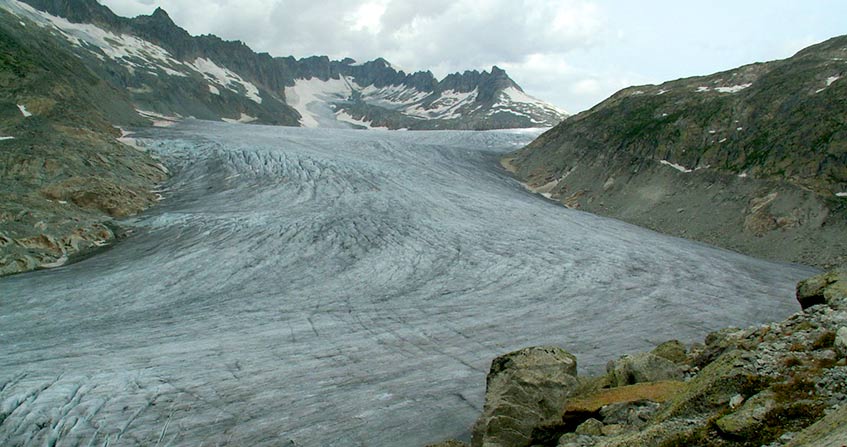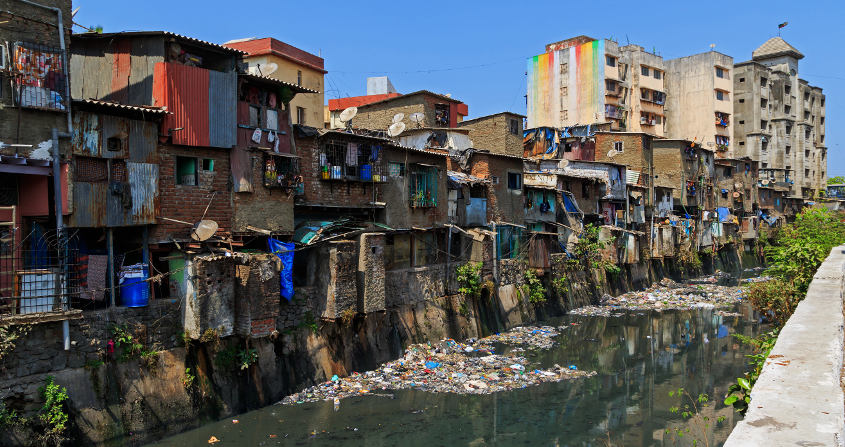Water law in France
PDF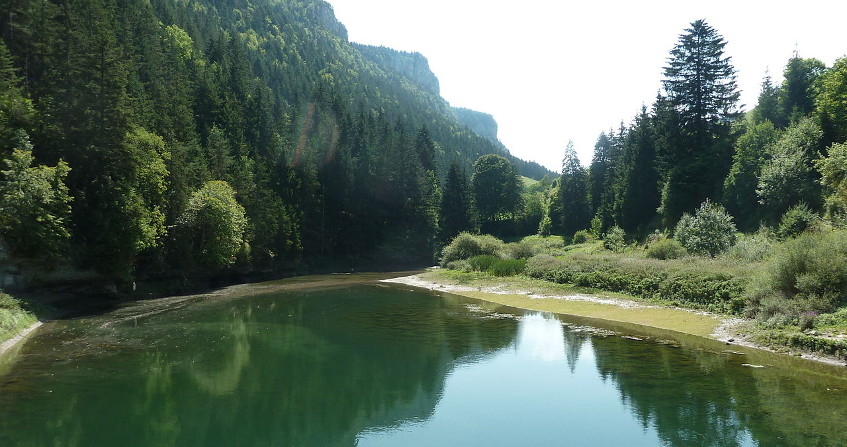
Water is a natural resource in permanent movement through the hydrological cycle, and as such it is difficult to grasp by law. If this observation of movement is obvious, the law has taken time to integrate it. The unitary and global nature of water has only recently been taken into account: French law incorporated the concept of a catchment area in the early 1960s. The very expression of water law is not without its uncertainties. More generally, the question is how water law was built in France and what are the essential elements that make it up?
1. Water: a resource in constant motion
Water as a constantly moving natural resource is difficult to grasp by law. Indeed, “the most beautiful law in the world will not make a drop of rain fall” [1].
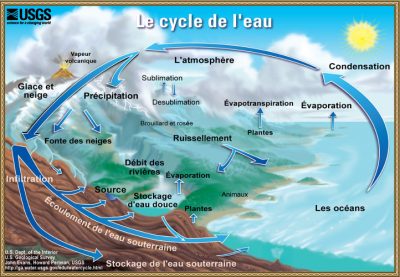
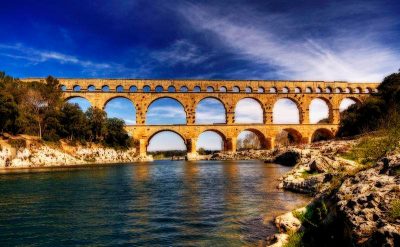
From the 1960s onwards, water law provided qualitative protection of water resources in a punctual and sporadic manner [6]. The main concern was the control of mainly chemical pollution of surface water. In addition, this fight was justified either on public health grounds or on the grounds of navigation on watercourses in order to limit or even remove obstacles that could hinder this activity. Protection was exclusively anthropocentric in nature, i.e. for the benefit of mankind and not the environment.
At present, water protection can no longer be considered solely from this angle, as this leads to neglecting its essential role in maintaining the balance in ecosystems. Nevertheless, guaranteeing the protection of water resources exclusively from the “ecocentric” point of view leads to forgetting the vital link between water and man, because any damage to water resources “always necessarily leads to a consequential damage to mankind, since there is damage to their environment” [7]. And conversely, “to serve nature is also to serve man” [8].
In French law, water law is characterised by chronic complexity. The legal status and regime of water lacks unity and is strongly linked to the right of ownership. Indeed, the Civil Code [9] states that water is a res communis, that is, something that belongs to no one and whose use is common to all. In addition, the Water Act of 3 January 1992 recognizes water resources as the Nation’s common heritage [10]. In addition, article L. 2111-7 et seq. of the General Code on the Property of Public Persons distinguishes between State watercourses subject to public law and non-State watercourses subject to private law. As a result, this complexity and confusion undermines the effectiveness of overall water protection.
2. The definition of the right to water
There is no legal definition of the term “water right”. Unlike environmental law, the French legislator has not drafted a Water Code [11]. Currently, the legal rules applicable to water resources are scattered among several codes. For example, water management planning is governed by the Environmental Code, public drinking water service by the Local Authorities Code, river public domain by the General Code of Public Property, water pollution offence by the Criminal Code, etc.
While some French doctrine still questions the relevance of a water right [12] “long characterized by its fragmentation” [13], other authors have tried to define the content of this right. Thus, for some, water law refers to “the set of rules that determine the legal regime of water, the rights that individuals can exercise and the measures that must be implemented to protect the water resource” [14]. And for others, water law is “a body of rules governing continental waters globally […] and constituting a legal system dealing with water in all its aspects, taking into account the interrelationships that exist within this physical environment and its environment” [15]. Finally, water law is concerned with the protection of water and aquatic environments in both quantitative and qualitative terms.
3. The progressive construction of the right to water
In France, the right to water has been gradually built up under the effect of “three major water laws” which have made it possible to set up a real water administration. Even if for some authors water law has not yet reached the age of maturity, it continues to be built for better water protection under the influence of European Union law. Thus, European standards contribute to the construction of a “globalized and unified water law” [16].
3.1. The adoption of “three major water laws”
It is possible to distinguish “three major water laws” that have been adopted in France and have made it possible to lay the foundations of the current water law:
- the law of 16 December 1964 on the regime and distribution of water and the fight against pollution;
- the law of 3 January 1992 on water;
- the law of 30 December 2006 on water and aquatic environments.
The first text that establishes the legal framework for regulating the pollution of water resources is the law of 16 December 1964 [17]. The adoption of this law was an important step in the fight against pollution and therefore for the protection of water resources as part of the common heritage. The legislator has provided for the creation of an administrative district recognizing the specificity of the watershed and has adopted a series of offences applicable against polluters.
Then, the law of 3 January 1992 [18] proceeds for the first time to the unification of the legal regime of water. Thus, the right to water has been combined around four main principles: the principle of the unity of water resources [19], the principle of water heritage, the affirmation of the general interest character of water protection and the principle of balanced and sustainable management of water resources [20]. This law provides for a single system of authorisation and declaration for all works, installations, works and activities carried out for non-domestic purposes, depending on the importance of the work, the risks involved, the dangers and the impact on health, safety and the free flow of water.
In addition, the legislator organizes water management around two planning documents, namely the Master Plans for Water Development and Management (SDAGE) [21] and the Water Development and Management Plans (SAGE) [22]. The SDAGE is a planning document drawn up for a period of 6 years at the scale of the hydrographic basin, while the SAGE is drawn up on a much smaller scale: that of the sub-basin, in particular to take into account the specificities of a territory. It is the SDAGE that determines the territories for which a SAGE is necessary in order to achieve the objectives set by the Water Framework Directive, namely the good ecological status of all water bodies. Since this law, urban planning documents (territorial coherence scheme, local urban planning plan and municipal map) must be compatible or made compatible with the SDAGE. In France, the SDAGEs have been revised and renewed for the period 2016-2021. For example, the latest version of the SDAGE for the Rhône Méditerranée basin came into force on 21 December 2015, for a period of 6 years [23].
Finally, the Water Act of 30 December 2006 [24] incorporates the principles affirmed in the 1992 Act. Among the major innovations it brings are the recognition of the priority use of water for human consumption and the recognition of the right of access to drinking water under conditions that are economically acceptable to all [25].
In addition, this law strengthens the legal scope of the SAGE, since it now acquires, like the SDAGE, the character of a document with full regulatory value: the regulations and the cartographic documents it contains are expressly declared by the law as enforceable against third parties for the execution of any installation, work, work or activity subject to declaration or authorization under the water police [26]. This recognition requires that the SAGE project be subject to a prior public inquiry.
3.2. The creation of specialized institutions in the water sector
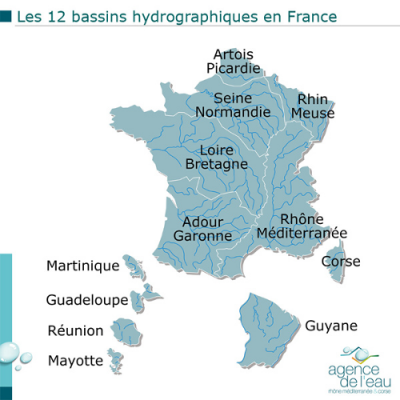

Indeed, the basin committees develop and update the SDAGEs and their advisory opinion is required for the development of the SAGEs [32]. In metropolitan France, the role of the basin committee in implementing the principle of participation in the water sector is reflected in the commission on the aquatic natural environment of the basin. It is consulted by the chairperson of the basin committee on the SDAGE’s orientations for the protection of the aquatic environment, or on any question concerning the aquatic environment in the basin.
In addition, the water agencies [33] have a specific role in implementing the principle of balanced and sustainable management of water resources. They were created by the 1964 law. Until 1991, they were called basin financial agencies and in principle operated in parallel with a basin committee. Today, water agencies have the status of public administrative State institutions [34], they are established in each basin or grouping of river basins and placed under the supervision of the Minister for the Environment.
The water agencies implement the SDAGEs and SAGEs by promoting balanced and economical management of water resources and aquatic environments, drinking water supply, flood control and the sustainable development of economic activities. In addition to these missions, they conduct a land policy to safeguard wetlands [35] approved by the basin committee: they can acquire land in these areas in order to fight, for example, against soil artificialisation. This wetland protection policy is old. France has been committed to protecting them since the signing in 1971 of the “Convention on Wetlands of International Importance, especially as Waterfowl Habitat” (Ramsar Convention). Finally, more recently, the law of 8 August 2016 for the reconquest of biodiversity, nature and landscapes extended the mission of the water agencies to the protection of the marine environment and to terrestrial and marine biodiversity.

In accordance with the principle of prevention and the principle of repairing environmental damage, water agencies establish and collect charges from public or private persons for water pollution, for the modernisation of collection networks, for diffuse pollution, for abstraction from water resources, for water storage during low-water periods, for obstacles on watercourses and for the protection of the aquatic environment [36]. The budget of the water agencies is funded by these fees, which are redistributed in the form of grants, granted to local decision-makers or contracting authorities (municipalities, groups of municipalities, farmers, industrialists) to finance mainly actions to combat water pollution. However, about 73% of the budget of these agencies comes from the payment of the domestic water pollution charge [37]. Thus, it is domestic consumers who mainly finance the budget of these agencies and not farmers or industrialists as one might think.
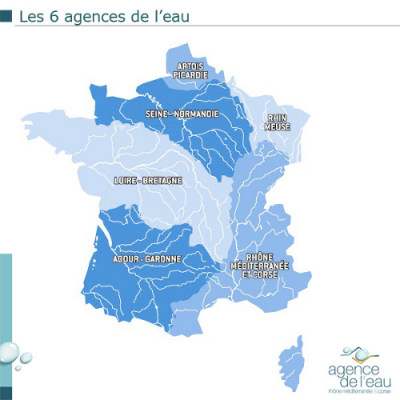
At the sub-basin level, a local water commission is created by the prefect to develop, review and monitor the application of the SAGE [38]. It is composed of three distinct colleges: the college of local authorities, their groups and local public institutions, the users’ college and the college of representatives of the State and its interested public institutions.
Finally, in France there are other structures likely to participate in water management and protection, such as territorial public basin institutions [39], public interest groups in the environmental field (trade union associations of owners and, more generally, environmental protection associations).
3.3. Principles of international law
Traditionally, international law approaches water resources according to the principle of territorial sovereignty. It recognizes that States have the exclusive power to regulate, as they see fit and in accordance with domestic law, activities within the limits of their territorial jurisdictions [40]. The principle of permanent sovereignty over natural resources was recognized in the 1960s as a component of the right of peoples to self-determination [41]. It is only the explicit formulation of the principle of territorial sovereignty over natural resources. Thus, “each State freely holds and exercises full and permanent sovereignty over all its wealth, natural resources and economic activities, including the possession and right to use and dispose of them” [42]. However, the right of peoples to dispose of their resources makes no distinction “between natural resources considered as raw materials and vital resources” [43]. Moreover, this right does not take into account the unequal distribution of the natural water cycle, which is by nature global. Thus, the right of peoples to dispose of their resources does not guarantee access to water and its protection, and it does not exclude the possibility of submitting water to market laws.
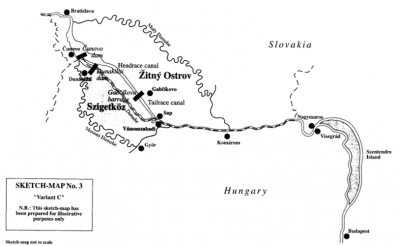
The obligation not to cause damage as well as the principle of rational and equitable use are closely linked to the principle of cooperation. In other words, they cannot be implemented without the cooperation of States bordering a transboundary watercourse. Indeed, the ICJ considered that “the rational and optimal use of the river’s waters can be considered as the cornerstone of the cooperation system” [45]. In accordance with the principle of equitable and reasonable use of water resources, riparian States must regularly exchange information on the uses and needs of States and on the changing water conditions in the transboundary basin. For the ICJ, a balance must be struck between “the use of the river for economic and commercial purposes on the one hand and the obligation to protect it from any damage to the environment that may be caused by such activities” [46].
The principle of not causing damage remains limited in scope because it is subject, in its application, to the rule of equitable and reasonable use of water. Indeed, while the latter aims to take into account the physical and geographical aspects of watercourses, it also aims to reconcile State interests in water resources.
In the end, international law does not provide effective solutions to protect water as a whole, since it is a right strongly marked by the principle of territorial sovereignty.
3.4. The influence of European Union (EU) law
EU law differs from international law in that it is much more binding and applies to all Member States. In addition, it shall take into account in particular the interdependence between surface water and groundwater.
French water law has developed under the influence of EU law. From 2000 onwards, the EU legislator became aware of the limited nature of the resource and the need to protect water quality in general, while taking into account its natural cycle, its fluid nature, the biological life of rivers, their ecosystems and aquatic environments.
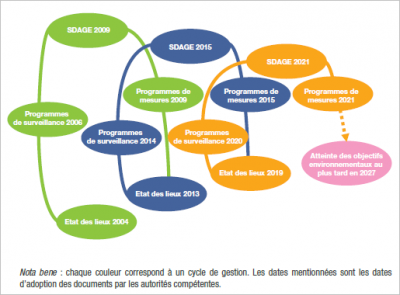
With this directive, water resources are protected throughout the entire cycle, from their source in nature to the consumer’s tap. In addition, the EU legislator imposes deadlines for Member States to comply with the quality and quantity objectives set out in the Water Framework Directive. As a result, all EU Member States, and in particular France, must comply with the objectives set by EU law, as otherwise they risk convictions by the EU Court of Justice. The ambition of this directive was to achieve good ecological status for all water bodies on EU territory by December 2015 at the latest, unless there was a duly justified derogation, with the possibility of postponing it to 2021 or 2027. At present, this objective is far from being achieved in France. The French State has even asked the European Commission on several occasions to extend the deadline set by this directive.
This directive also reflects the willingness of Member States to harmonise their legal regimes on water resources. It states that “water is not a commercial good like any other, but a heritage that must be protected, defended and treated as such” [50]. However, EU law does not recognise a right to drinking water that could be deduced from this statement. Moreover, in accordance with this right, EU Member States are free to choose either direct management of the public drinking water service or indirect management, entrusted to large companies specialised in this field.
Finally, as the Conseil d’État points out, this directive “contributes to reintroducing, not without pain for all Member States, a coherence in water law by having changed its approach: by ceasing to sediment the texts, it starts from the results to be achieved in the long term and establishes at regular intervals reports on their achievement” [51]. Since the entry into force of the Water Framework Directive, it has been supplemented by other directives [52], which only contributes to the continuous strengthening of water resource protection and the progressive construction of water law.
4. Messages to remember
- In France, water law remains a rather complex and difficult to access right, since the legal rules governing water protection and management are scattered in several codes, laws, decrees, etc.
- Under the influence of EU law, the legal framework for this vital resource takes greater account of its natural cycle, its ecological reality, natural environments and aquatic environments.
References and notes
Cover image. Barrage d’Engins (38). Source: Wikipedia. By Parisdreux (Own work)[CC BY-SA 3.0 (https://creativecommons.org/licenses/by-sa/3.0)], via Wikimedia Commons]
[1] GAZZANIGA J.-L., LARROUY-CASTERA X., Le droit de l’eau et les droits d’eau dans une perspective historique, in AUBRIOT O., JOLLY G. (coord.), (2002), Histoire d’une eau partagée (Provence, Alpes, Pyrénées), Publications de l’Université de Provence, Aix-en-Provence, p.18.
[2] By hydrographic basin, we mean a set of lands irrigated by the same hydrographic network, i.e. by a set of tributaries to a main watercourse, RAMADE F., (2002) Dictionnaire encyclopédique de l’écologie et des sciences de l’environnement, Dunod, Paris, 2nd edition, p. 734.
[3] GEORGE P., (1984-1985), Water in Mediterranean Civilizations and Economies, Paralelo, No. 37, Revista de estudios geograficos, Volumen Homenaje a Manuel de Teran, No. 5-9, p. 299.
[4] MALISSARD A. (2002), The Romans and Water. Fountains, bathrooms, thermal baths, sewers, aqueducts… Les Belles Lettres, Paris, p. 309.
[5] FRONTIN, Les aqueducts de la ville de Rome, text prepared, translated and commented by P. Grimal, 3rd ed., Paris, Les Belles Lettres, 2003, p. 113. It is a treaty on the water system in Rome at the height of the Empire written between 97 and 103 AD.
[6] It is also worth noting a very old text that already fought against river pollution in France, namely the Royal Ordinance of 1669 on water and forests, which prohibited the dumping of garbage and rubbish in rivers.
[7] FABRE-MAGNAN M., Postface. Pour une responsabilité écologique, in NEYRET L., MARTIN G. J. (dir.), (2012), Nomenclature des préjudices environnementaux, L.G.D.J., Paris, p. 393.
[8] MORAND-DEVILLER J., (2010), Le droit de l’environnement, 10th ed., PUF, Paris, coll. Que sais-je?, p. 5.
[9] Art. 714 of the Civil Code.
[10] Article 1 of the Act states: “Water is part of the common heritage of the nation. Its protection, enhancement and development and the development of the usable resource, while respecting natural balances, are of general interest. The use of water belongs to all within the framework of laws and regulations as well as previously established rights.
[11] It should be recalled, however, that there is a Water Code developed by the doctrine, which is a compilation of the legal rules in force. See DROBENKO B. and SIRONNEAU J., (2013), Le Code de l’eau, 3rd ed., Johanet, Paris, XII-105 p.
[12] It is interesting to note that in some countries such as Spain or Italy, the term “water law” or “water resources law” is used instead.
[13] SAOUT A., (2011), Théorie et pratique du droit de l’eau, Johanet, Paris, 472 p.
[14] GAZZANIGA J.-L., OURLIAC J.-P., LARROUY-CASTÉRA X., (2017), “Eaux”, JurisClasseur Rural, fasc. 10, § 10.
[15] JÉGOUZO Y., (2010), “Is there a right to water? “, in Report of the State Council, Water and its Law, vol. II, La documentation française, Paris, p. 567.
[16] Ibid. at 570.
[17] Law No. 64-1245 of 16 December 1964 on the regime and distribution of water and the fight against pollution, JORF, 18 December 1964, p. 11258.
[18] Water Act No. 92-3 of 3 January 1992, JORF, No. 3, 4 January 1992, p. 187.
[19] It is a question of taking into account the physical reality of the water resource and its natural cycle.
[20] JÉGOUZO Y., (2010), “Is there a right to water? “, op. cit. , p. 570.
[21] The SDAGE is developed by the basin committee at the watershed level.
[22] The SAGE is developed by the local water commission at the sub-watershed level.
[23] This document can be consulted on the official website of the Rhône-Mediterranean basin: ww.rhone-mediterranee.eaufrance.fr.
[24] Law No. 2006-1772 of 30 December 2006 on water and aquatic environments, JORF No. 303 of 31 December 2006, p. 20285.
[25] Art. 1, codified in art. L. 210-1 of the Environmental Code
[26] Art. L. 212-5-2 of the Environmental Code
[27] The six watersheds are: Loire-Bretagne, Rhône-Méditerranée-Corse, Adour-Garonne, Seine-Normandie, Artois-Picardie, Rhin-Meuse. Since 2002, Corsica has had a hydrographic basin. Since 2003, the overseas departments have had four river basins: those of Guadeloupe, French Guiana, Martinique and Réunion, in accordance with Art. L. 213-13 et seq. of the Environment Code Overseas collectivities also have a basin, including the Mayotte basin, art. L. 213-14, II of the Environmental Code
[28] These institutions include the National Water Committee, the National Office for Water and Aquatic Environments (ONEMA), whose tasks have been transferred to the French Biodiversity Agency, the Permanent Technical Committee on Dams and Hydraulic Works, the Conservatoire de l’espace littoral et des rivages lacustres, as well as the inter-ministerial mission for water, which assists the Minister in charge of the environment in his coordination of the various ministries working in the water sector.
[29] The regional prefect of the place in the department where one of the 6 water agencies is based is the prefect of the basin coordinator.
[30] Decree of 16 May 2005 delimiting basins or groupings of basins for the preparation and updating of master plans for water development and management, JORF, No. 113, 17 May 2005, p. 8556.
[31] Since the law for the reclamation of biodiversity, nature and landscapes of August 9, 2016, parliamentarians (one deputy and one senator) have been part of this college.
[32] In each overseas department, the law for the reconquest of biodiversity, nature and landscapes of 9 August 2016 changes the name of the basin committee to the water and biodiversity committee.
[33] In overseas France, the water agencies are replaced by water boards. In principle, the system set up for overseas France is basically the same as that set for the metropolitan area.
[34] Art. L. 213-8 of the Environmental Code
[35] According to art. L. 211-1 of the Environmental Code, “wetlands are defined as lands, whether or not they are exploited, usually flooded or flooded with fresh, salt or brackish water on a permanent or temporary basis”. These areas are delineated in the SDAGE and may, for example, coincide with the areas covered by the Natura 2000 network.
[36] Art. L. 213-10 of the Environmental Code
[37] DROBENKO B., (2007), Droit de l’eau, Gualino, Paris, p. 269.
[38] Art. L. 212-4 of the Environmental Code
[39] Art. L 213-12 of the Environmental Code
[40] P. Daillier, M. Forteau, A. Pellet, Droit international public, 8ème éd., Paris, L.G.D.D.J., 2009, p. 513, 527.
[41] Art. 1 of United Nations General Assembly Resolution 1803 (XVII) of 14 December 1962 “Permanent sovereignty over natural resources”; Art. 1 of United Nations General Assembly Resolution 3171 (XXVIII) of 17 December 1973 “Permanent sovereignty over natural resources”; Art. 2 § 1 of United Nations General Assembly Resolution 3281 (XXIX), “Charter of the economic rights and duties of States” of 12 December 1974.
[42] Art. 2, § 1 of the Charter of the Economic Rights and Duties of States, 12 December 1974.
[43] S. Paquerot, Le statut des ressources vitales en droit international. Essay on the concept of the common heritage of humanity, Brussels, Bruylant, 2002, p. 13.
[44] I.C.J., 25 September 1997, Case concerning the Gabcikovo-Nagymaros Project, Hungary v. Slovenia, ICJ Reports, 1997, p. 7; S. Maljean-Dubois, “Presentation of the Case” in P.-M. Eisemann, P. Pazartis (dir.), La jurisprudence de la Cour internationale de justice, Paris, Pedone, 2008, pp. 487-503.
[45] § 174.
[46] § 175.
[47] Directive 2000/60/EC of the European Parliament and of the Council of 23 October 2000 establishing a framework for Community action in the field of water policy, OJEC, No L 327, 22 December 2000, pp. 1-73.
[48] Such as “good ecological status” or “good chemical status” of surface water bodies and groundwater bodies. The qualification of the ecological status is determined according to biological, hydromorphological and physico-chemical quality. Good chemical status of surface water is the chemical status achieved for a body of surface water in which pollutant concentrations do not exceed the environmental quality standards set by the Water Framework Directive and other complementary EU standards. In practice, the determination of the ecological and chemical status of a water body is left to biologists and chemists.
[49] Law No. 2004-338 of 21 April 2004 transposing Directive 2000/60/EC of the European Parliament and of the Council of 23 October 2000 establishing a framework for Community action in the field of water policy.
[50] Cons. 1 of Directive 2000/60/EC of the European Parliament and of the Council of 23 October 2000 establishing a framework for Community action in the field of water policy, OJEC, No. L 327, 22 December 2000, p. 1.
[51] EC, Public Report, (2010), L’eau et son droit, EDCE, n° 61, La Documentation française, Paris, p. 58.
[52] For example, Directive 2006/118/EC of the European Parliament and of the Council of 12 December 2006 on the protection of groundwater against pollution and deterioration; Directive 2007/60/EC of the European Parliament and of the Council of 23 October 2007 on the assessment and management of flood risks; Directive 2008/105/EC of the European Parliament and of the Council of 16 December 2008 on environmental quality standards in the field of water policy, amending and repealing Council Directives 82/176/EEC, 83/513/EEC, 84/156/EEC, 84/491/EEC, 86/280/EEC and amending Directive 2000/60/EC; Council Directive 2013/51/Euratom of 22 October 2013 laying down requirements for the protection of public health with regard to radioactive substances in water intended for human consumption
The Encyclopedia of the Environment by the Association des Encyclopédies de l'Environnement et de l'Énergie (www.a3e.fr), contractually linked to the University of Grenoble Alpes and Grenoble INP, and sponsored by the French Academy of Sciences.
To cite this article: CHIU Victoria (January 5, 2025), Water law in France, Encyclopedia of the Environment, Accessed April 2, 2025 [online ISSN 2555-0950] url : https://www.encyclopedie-environnement.org/en/society/water-law-in-france-2/.
The articles in the Encyclopedia of the Environment are made available under the terms of the Creative Commons BY-NC-SA license, which authorizes reproduction subject to: citing the source, not making commercial use of them, sharing identical initial conditions, reproducing at each reuse or distribution the mention of this Creative Commons BY-NC-SA license.






